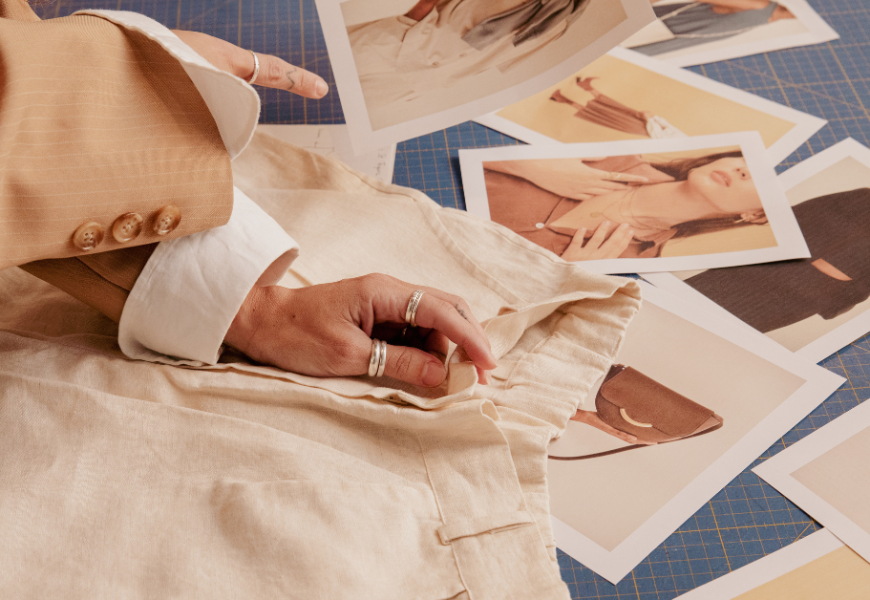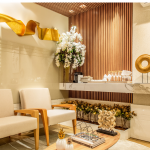In the modern and fast-paced fashion world, exclusivity and uniqueness gauges attention and captivates minds. With the world moving towards discovering more elements of design in fashion that relates to functionality, contemporary designs and sustainability, it opens in-depth opportunities for innovation and self-expression. Elements of fashion play a vital role in blending aesthetics and functionality. Elements that build the designs such as shape, the balance in fashion design of the materials and their proportion, lay emphasis in dress and other clothing items, invariably.
In this article, we’ll delve into exploring major elements of design in fashion that influence the choices of customers and the modern world.
Table of Contents:
What are the Elements of Design in Fashion?
The fundamental elements of design in fashion are what builds the garments and gives them originality and a framework. The elements like lines, texture, color, shape in fashion design, space in designs, etc. draw the outline of the garment and the propose its distinctiveness.
Elements such as these play a major role in defining the aesthetic appeal, functionality, and overall impact of a design. Lines guide the eye and create movement, while texture adds depth and tactile interest. Color brings life to the garment, evoking emotions and making statements. Shape in fashion design form the garment’s structure and balance, ensuring a harmonious and flattering fit. Together, these elements not only enhance the design’s visual appeal but also communicate its purpose and story, making them integral to the art of fashion design.
Lines in Fashion Design
Lines bring structure to the garments that gives various definitions to it depending on the length and the type. They lead the viewer with the flow and overall movement of the attire. Lines can be viewed as:
- Vertical Lines – This kind of designment offers a more slim and graceful look to the clothing and is often used in formal attire like suits and gowns.
- Horizontal Lines- These lines create a broaden design that gives a grounded effect that can be most commonly seen in everyday casual wear.
- Diagonal Lines – These lines convey momentum and vibrancy that brings life to most designs seen in progressive and cutting-edge fashion.
- Curved Lines – These lines are often related to creating a softer and a more feminine look, generally introduced in gowns and flowy dresses.
Lines as such can be seen in examples like pinstripe suits that have vertical lines, a horizontally striped t-shirt that adds width and a more balanced look, a diagonally seamed striped in active wear or sportswear, and curved lines in flowy dresses.
Shape in Fashion Design
Shapes bring visuals in an outfit to life. They merge with the fabric to create different silhouettes that can overall emphasize or highlight something to make it more noticeable or prominent. Some common shapes that can have impact on the clothing includes:
- A-line: This style narrows at the top and flares at the bottom, typically seen within garments like dresses or skirts.
- Hourglass: This look highlights the shape of an hourglass into the garment and enhances the look of the body parts as per that shape. Such silhouettes can be seen in corsets and bodycon dresses.
- Straight: This style gives wide-cut look and offer a gender-neutral silhouette, making it versatile and comfortable for all body types. These can be commonly seen in oversized shirts or pants, creating a loose-fitting relaxed ensemble.
Some of the notable designs like flowing A-line flowing beachy skirts or a classic Ralph Lauren straight cut-tweed suits gives a clear example of how elements of design shape in fashion impact the overall look of the attire.
Color in Fashion Design
The most significant element of design in fashion that can create the approach and energy of the outfit is color. It can be influential in determining what occasion the outfit can be stitched for, or what vibes or aesthetic the event match with. Colors generally evoke emotions and attention. Few emotions that colors can paint can be derived basis the following color palette:
- Warm Colors: Red, orange, yellow, coral, etc. are warm colors that can convey passion, vibrant, excitement, and comfort energy.
- Cool Colors: Cool colors like blue, green and turquoise radiate calmness, soothing and sophisticated energy.
- Neutral Colors: Balanced and versatile spirit is conveyed with neutral colors like black, white and grey.
Few trending color palettes in 2024 are earthy and warm tones like Stella McCartney and Chloé have featured ochre and burnt orange shades in their outerwear and knitwear and aquatic and serene blue palette given out by Prada in their 2024 summer/spring collections.
Texture in Fashion Design
Texture adds volume and dimension to the garments. It can exhibit how loud or subtle a piece can be depending upon the layers, or the cloth material type. Through various techniques, texture can add depth to the garment and can influence its overall feel. Some of the common textures found in everyday garments are:
- Smooth textures: Offers a finished or a plush touch like silk, satin or chiffon that are delicate and presents a sleek look.
- Rough textures: Textures like denim, corduroy or tweed extend a rough and rugged feel and aesthetic to garments with their sturdiness. They give out a casual or laid-back sophistication in fashion.
- Patterned textures: A design-embedded fabric that focuses on detailing and providing a rich aesthetic includes laceworks, embroidery or beading that adds a touch of glamour.
Most of the fabrics are used on different occasions to pertain to the event and its aesthetic. Like a brand’s winter collection might be made up of woolen, a sequin dress for a party or a hand-embroidered for a wedding lehenga.
Balance in Fashion Design
Balance in fashion design brings a sense of harmony and proportion to a garment affirming that no individual element outweighs the other. Usually, balance in fashion design is brought by symmetry, where elements are placed in a certain way to highlight its features. Some of the types of balance includes:
- Symmetrical Balance: This type of balance ensures both the sides of the garment are equal in terms of design elements, such as shape, color, texture, and size and makes certain they mirror each other.
- Asymmetrical Balance: This type of lopsided balance is used in dynamic or modern look to highlight contrast, movement, and visual interest, gauging attention.
- Radial Balance: Prints and patterns are sometimes made by arranging elements in a circular or radiating pattern, with the design expanding outward from a central point, usually found in dresses, or accessories for a dynamic appeal.
Some common examples of balance in fashion design are symmetrical tailored suits, radial patterns like geometrical figures in traditional wear, skewed hemlines in a dress, etc.
Emphasis in Fashion Design
Emphasis in Fashion Design gives focus to specific elements of the garment to highlight its significance and make it a primary feature. It can be done through various approaches like adding additional layers, embellishments, materials, have contrasting colors, have bold cuts, prints or visually striking graphics. Such emphasis includes decorating the garment with sequins or beads, draping, layering, etc. that drives the attention to detail.
Some examples of emphasis in design includes the turquoise color of products in Tiffany & co., the color contrast of black and gold with only-flowers print for Manish Malhotra x Starbucks collab, the bold patterns in Gucci’s collection, etc.
Harmony and Proportion in Fashion
To build the pieces together that develop a balance between them, harmony and proportion is essential. Harmony ensures that two things in a garment fit well together like two contrasting colors, two types of fabrics, a combination of cuts, etc.
Proportion determines the overall look of the garment, coordinating between two elements and keeping the scale ideal to enhance the overall aesthetic of the attire.
The balance of both of these two principles ensures that the garment feels complete, visually appealing, and flattering, making it both stylish and comfortable.
Conclusion
Mastering the use of elements of design in fashion makes the artist’s pieces standout in the modern fashion world. The knowledge and skills derived by understanding these individual elements, be it color, size, shape, pattern or texture can help a fashion designer think creatively and strategically. As modern fashion continues to grow, the skill of building creative and impactful garments with the help of these elements becomes increasingly important. Designers who harness these fundamentals can craft pieces that’ll influence future trends and personal styles.



















